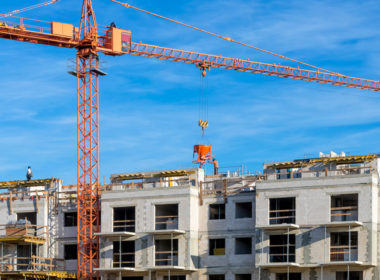Snapshot
- Major changes to the development and management of community title schemes commenced 1 December 2021.
- The reforms include lower thresholds for key dealings with association property.
- New amalgamation and termination processes have been introduced.
- New by-law restrictions and damages claim have also been introduced.
The long awaited community title changes commenced on 1 December 2021 with the Community Land Management Act 2021 (‘CLMA’), the Community Land Development Act 2021 (‘CLDA’) and the accompanying regulations now in force.
If you own or live in a community title property, advise clients in respect of community title property or act for developers, the changes will affect you.
For ease of reference, we refer to community, precinct and neighbourhood associations generally as ‘associations’ and where a specific requirement relates to a type of association we will note that association type.
Governance Changes
More flexibility in decision making
Changing an association’s management statement, structure or land was previously very difficult with many resolutions required to be passed unanimously. As part of the reforms these restrictions have eased. The table below indicates the changes to key resolutions under community title legislation (except where Tribunal or Court orders provide otherwise):
| Change | Type of Resolution required | |
| Previous Act | Current Act | |
| Changing a development contract: | ||
| if change is to the basic architectural or landscaping design or the essence or theme of the scheme | Unanimous resolution | Unanimous resolution |
| If change required by change in law or consent authority | Must notify each association & strata a party to the contract
|
Ordinary resolution |
| any other change requiring development consent | Special resolution of each association & strata a party to the contract | Special resolution |
| any other change that does not require development consent |
Ordinary resolution of each association and strata that is party to the contract | Special resolution |
| Where subdividing or creating association property | Unanimous resolution | Special resolution |
| Conversion of development lot to community or precinct property | Unanimous resolution | Special resolution |
| Severance of community or precinct development lot | Unanimous resolution | Special resolution |
| Adding land to association property by lease or transfer | Unanimous resolution | Special resolution |
| Surrender lease of additional land | Unanimous resolution | Special resolution |
| Lease or surrender a lease of (some but not all) community or precinct property | Unanimous resolution | Special resolution |
| Transfer of land | Unanimous resolution (only if neighbourhood association not part of community association) | Special resolution |
| Creating or releasing easements, restrictions on use or positive covenants burdening association property | Unanimous resolution | Special resolution |
| Creating or releasing easements, restrictions on use or positive covenants benefiting association property | Unanimous resolution | Ordinary resolution |
| Closing an open accessway within community parcel | Unanimous resolution | Special resolution |
| Amendment of management statement
|
||
| If change would affect by-laws relating to the control or preserve the essence or theme of the association
|
Unanimous resolution | Special resolution |
| If change would affect a by-law made by Tribunal order | Unanimous resolution | Special resolution |
| Any other change | Special resolution | Special resolution |
Sustainability infrastructure resolutions
Section 5 of the CLMA redefines a special resolution, lowering the threshold for sustainability infrastructure resolutions to less than 50% of votes being cast against them. They include motions to reduce pollution, energy consumption, waste and to increase recycling and sustainable transport, bringing community title legislation into line with Strata Schemes Management Act 2015 (‘SSMA’). Specific changes include that service agreements with utility suppliers are now capped to 12 months after the first annual general meeting or three years.
Note: all other special resolutions require that not more than 25% of votes be cast against it.
Introduction of harsh, unconscionable or oppressive restrictions on by-laws
The CLMA also provides, at section 130(1), the requirement that by-laws must not be harsh, unconscionable or oppressive. Such by-laws can be found to be invalid by the NSW Civil & Administrative Tribunal under section 140 of the CLMA. Should the adverse affectation test used in Cooper v The Owners – Strata Plan No. 58068 [2020] NSWCA 250 to determine identical wording under s 139 of the SSMA be applied, it will prove difficult for associations to prohibit animals or other uses of a lot that do not adversely affect other occupants. However section 130(1) will need to be interpreted in light of section 128(2) of the CLMA which enables by-laws relating to the control or preservation of the essence or theme of the development, such as by-laws limiting occupancy to people of a certain description, fixing architectural, building and landscaping materials and by-laws limiting the use of association property. Section 128(2) will be a key limitation on the power to declare a by-law harsh, unconscionable and oppressive and potentially invalid. The SSMA does not have a similar provision to section 128(2) of the CLMA.
Introduction of right to recover loss
Section 109 of the CLMA now provides a statutory entitlement to recover compensation from their association for their reasonably foreseeable loss caused by a breach by the association of its duty to maintain and repair the association property similarly to s 106 of the SSMA.
Other changes
In line with the SSMA, the CLMA now provides for tenant representatives on neighbourhood committees (section 36), a duty of association committee members to carry out their functions for the benefit, so far as practicable, of the association with due care and diligence (section 41), a limit on the term of appointment for community managing agents (section 54), a requirement that they disclose commissions (section 64), a limit on the term of facilities managers (section 72), and occupancy limits of up to two adults per bedroom subject to planning approval (section 129).
Restrictions on eligibility for appointment to the association committee apply with managing agents, facilities managers and leasing agents ineligible, with persons connected with the original owner required to disclose that fact to be eligible for election (section 35). Voting has also been modernised with Schedule 1 of the CLMA enabling the regulations to provide for the use of virtual meeting technology and pre-meeting electronic voting although a resolution must first be passed to do so. This will be important once the current COVID regulations permitting this are repealed.
Process Changes
Development contracts
Part 7 of the CLDA and its regulations deal with development contracts. Development contracts set out a description of the land to be developed, the proposed amenities and the basic architectural design & landscaping for the association and any theme on which it is based, together with a concept plan amongst other requirements. They are registered documents and are binding. Under the reforms, any land to be later added must now be specified as must any warranted development (permitted work that a developer may be compelled to do) and authorised proposals (permitted work that the developer cannot be compelled to do). Strangely, the previous requirement for a warning that the scheme may not be completed or may be varied has not been included.
The resolutions required to amend a development contract are set out above. Section 55 of the CLDA defines ‘development concerns’ as adding to association property or adding land to a scheme in accordance with a development contract and the carrying out of any other development permitted to be carried out in the development contract. Specifically excluded as development concerns are amending a development contract, subdividing association property and granting a lease over association property. This is crucial as it is unnecessary for a development concern decision to be supported by either a special or unanimous resolution and the relevant developer’s vote on a development concern overrides any other votes. Further, if the association does not sign a dealing, plan or instrument about a development concern the developer has power to do so on its behalf. In a bid to protect lot owners a unanimous resolution is required to certify the completion of the development contract.
New amalgamation process
The CLDA provides a new process for amalgamation of tiered schemes. A precinct or neighbourhood association can now apply to the Registrar-General to be amalgamated with its community association. Fourteen days’ notice of the proposed amalgamation must be made prior to such an application. The application must be supported by each association seeking to be a party to the amalgamation passing a special resolution, strata schemes that are part of a subsidiary scheme passing a special resolution in support, each owner of a lot owner that is not a subsidiary scheme and the relevant planning authority consenting to the amalgamation. The Registrar-General may require the consent of any lessees, mortgagees, chargees or covenant chargees of affected lots, so it would be wise to include these in the application. If amalgamation is approved, the subsidiary scheme is terminated, its assets and liabilities become those of the community association and each former precinct or neighbourhood development lot in the amalgamated subsidiary scheme becomes a community development lot.
Variation or Termination of schemes by the Land Registry Service
Previously, if lot owners in an association wanted to vary or terminate their scheme, an application to the Supreme Court for orders to this effect was required. The Court had to be satisfied either that the completion, if the association was a staged development, had become impracticable, that the association’s continuation had become impracticable or that each association in the development, each owner, registered mortgagee, chargee and covenant charge had made the application to terminate the scheme. This process remains substantially the same.
Before 1 December 2021, the Registrar-General only had power to terminate neighbourhood associations that were not part of a community association, that had not applied to the Supreme Court for variation or termination orders and had followed the prescribed process which included a unanimous resolution. Now, under part 9 of the CLDA an application for termination for all associations can be made to the Registrar-General provided an application for termination or variation of the association has not been made to the Supreme Court and the association does not contain a subsidiary strata scheme.
The application must be supported by each association, each lot owner, mortgagee, chargee, caveator and covenant chargee and the relevant consent authority. The Registrar-General may also require service providers having the benefit of a statutory easement and public authorities whose consent to amend a by-law is required to provide consent to the termination. A notification process appropriate to enable the application to come to the public’s attention is required prior to the application. Should an association be terminated, the assets and liabilities of the association vest in the former lot owners in proportion to their unit entitlements or as otherwise specified application and the former association property vests in the former lot owners are tenants in common.
Creation of statutory easements upon registration of management statement
Statutory easements are now defined and dealt with in part 5, division 2 of the CLDA. They are easements conferring rights to provide a service line within a scheme and a service using the service line, an obligation to maintain and repair the service line and a right of entry for this purpose. They are created upon registration of the relevant management statement containing a prescribed diagram showing the position of the service line. The service line may be completed before or after the creation of the statutory easement.






